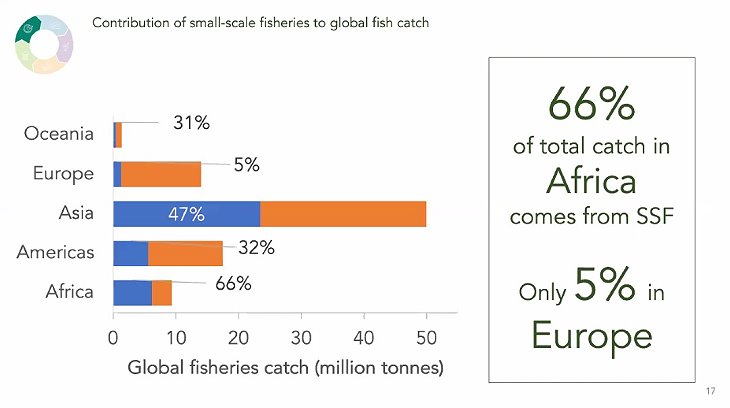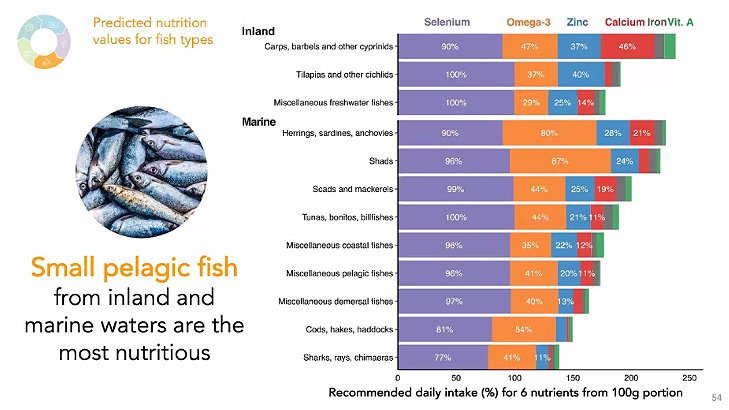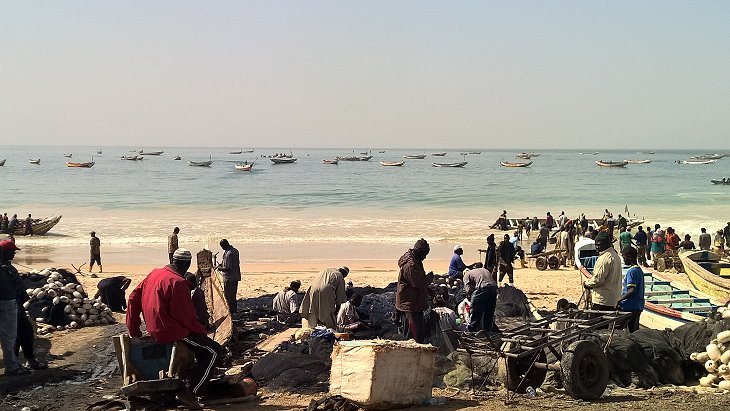 FAO’s webinar on 23rd November 2021 provided a snapshot of major outcomes of an in-depth study ‘Illuminating the hidden harvest – the contribution of small-scale fisheries (SSF) to sustainable development’ undertaken by >800 experts with case studies in 58 countries covering important marine and inland fisheries. FAO, Duke University and WorldFish launched this initiative in 2017, inspired by the 2012 World Bank report casting light on the much neglected contributions of artisanal fishers - men and women. The full report, including recommendations, will be available in early 2022.
FAO’s webinar on 23rd November 2021 provided a snapshot of major outcomes of an in-depth study ‘Illuminating the hidden harvest – the contribution of small-scale fisheries (SSF) to sustainable development’ undertaken by >800 experts with case studies in 58 countries covering important marine and inland fisheries. FAO, Duke University and WorldFish launched this initiative in 2017, inspired by the 2012 World Bank report casting light on the much neglected contributions of artisanal fishers - men and women. The full report, including recommendations, will be available in early 2022.
The outcomes presented confirmed and quantified the significant and important role and contribution of SSF for social, economic, and environmental sustainability, equitability and inclusiveness. Key findings do not only confirm figures and trends already documented but go beyond earlier findings because of improved study coverage and methodological advances. Major messages are:

-
40% of global fish catch (~ 37 mio t/yr) is generated by small-scale fisheries, overwhelmingly for human consumption. 32% is inland and 68% marine catch. See the distribution between artisanal and industrial catches by continent in a slide shown by Michael Funge-Smith of FAO above).
-
492 million people’s livelihood depends at least partly on the SSF value chain – these are producers, processors, traders, people in other related professions, subsistence workers and their family members. Of these 492 million people, 60 million people are directly employed (either part-time or full-time), 53 million are subsistence workers, while the remaining are dependents.
The vast majority of small-scale fishers live in Asia and Africa. They represent 7% of all citizens in the world and 13% of the population in developing countries. -
The SSF sector contributed US$ 77 billion (2013-17) average annual total revenues from first point of sale. In other words, SSF are the 5th largest ocean economy in the 58 countries studied!
-
45 million women participate in SSF value chains globally: 15% engage in pre-harvest activities, 19% in commercial harvest, 50% in post-harvest and 45% in subsistence fisheries activities.
-
The nutritional value of fish and its contribution to food security is globally acknowledged. Analyses of different species show that small pelagic fish species (marine and inland) are of most nutritional benefit.
Nutritional values modeled for each fish species is now included in FishBase (see the slide by David Mills of WorldFish below).
-
Two (2) tons of every 10 tons of catch by SSF are from artisans operating within co-management governance structures. Fishers regard themselves as active implementors of the Voluntary Guidelines for sustainable SSF. The proportion of effective co-management in SSF governance increases substantially from national and sub-national to local level. The benefits documented suggest that it would be advantageous to expand co-management significantly. But recommendations will only be fully developed early 2022.

The 2012 Worldbank report can be accessed here. More information on the webinar is here. The recording can be accessed here.








